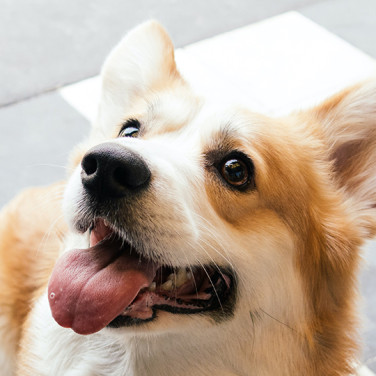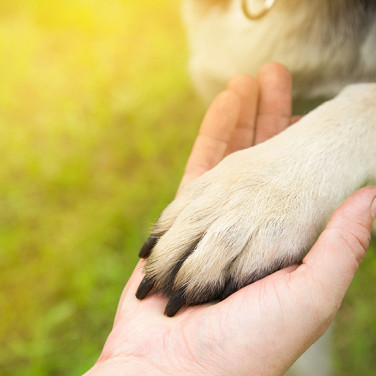DISEASES
What is an Umbilical Hernia in Dogs - Causes, Symptoms, and Treatment
페이지 정보
본문


What is an umbilical hernia in dogs?
An umbilical hernia refers to a condition in which an opening around the belly button allows a portion of the abdominal lining, fat, or organs to protrude through. This typically occurs because the abdominal wall does not completely close after the puppy is born, leaving a hole through which some of the abdominal linings can pass through.
During the puppy's gestation period, the mother dog's placenta and the puppy's abdominal wall are connected by an umbilical cord that provides nutrients. After birth, the mother dog cuts the cord with her teeth, or a keeper may cut and tie it. While small holes less than 1 cm in diameter may naturally close within 6 months, larger holes may not. When a hernia doesn't close on its own, surgery may be necessary. This is because the intestine can protrude through the hole, leading to complications such as intestinal obstruction.
Causes of umbilical hernia in dogs
The cause of umbilical hernia in dogs is not precisely known, but it's been established that genetics are a contributing factor. This means that if one parent has a pup with an umbilical hernia, there's a high likelihood that the other puppies will also develop it. It is a good idea to examine all pups for the presence of an umbilical hernia within the first 6 months to prevent complications later down the line.
The following breeds are known to have a higher chance of umbilical hernias:
- Airedale Terrier
- Basenji
- Pekingese
- Pointer
- Weimaraner
Symptoms of umbilical hernia in dogs
An umbilical hernia is typically identified as a soft swelling on the skin. These hernias can vary in size, and the symptoms experienced will depend on whether they are classified as uncomplicated or complicated.
Uncomplicated hernias are noncompound and can be reduced, meaning that the abdominal contents can be palpated and manipulated back into place without becoming trapped in the hernia. In most cases, the only symptom experienced is the protrusion of tissue through the hernia.
In contrast, complicated hernias cannot be reduced and may lead to additional symptoms. These types of hernias occur when the contents of the abdomen become trapped within the hernia, or when the tissue becomes twisted or obstructed, preventing blood flow. When this happens, necrosis can occur, leading to further symptoms.
The symptoms that accompany a complicated hernia are as follows:
When to see the vet for umbilical hernia in dogs
An umbilical hernia typically doesn't present a significant health risk, but tissue necrosis can occur if a portion of the intestine or other tissue becomes trapped in the opening and begins to reduce proper blood flow. In such cases, symptoms like pain, warmth, vomiting, loss of appetite, and decreased energy may manifest in the hernia area. This is considered an emergency, and prompt surgery is necessary. If you suspect your pet has an umbilical hernia, it's essential to seek veterinary attention immediately to determine which type of hernia is present.
How to deal with an umbilical hernia in dogs at home
Typically, smaller openings in an umbilical hernia will close on their own within six months with no treatment. However, if the protrusion or any of the above-listed symptoms persist after the sixth month, it is essential to seek medical attention to establish which type of hernia and the appropriate treatment plan.
Diagnosing an umbilical hernia in dogs
An umbilical hernia can typically be diagnosed through a physical examination. However, additional tests such as radiographs or ultrasound of the abdomen may be necessary to determine the exact size of the hernia and assess the abdominal contents that may be protruding through it, such as abdominal fat, small intestine, large intestine, and so on.
Treatment for umbilical hernias in dogs

If an umbilical hernia does not close within six months or the hole is discovered to be large, there is a risk of complications, including intestinal obstruction. In such cases, emergency surgery may be necessary, especially if tissue necrosis is occurring or if the symptoms mentioned earlier appear.
The surgical procedure involves placing normal abdominal contents back into the abdominal cavity and removing any necrotic tissue. The hernia is then repaired by suturing the opening.
Prognosis of umbilical hernia surgery in dogs
Overall, the outlook following surgery is typically very positive. Recurrence is uncommon and surgical complications are rare occurrences.
Can you prevent umbilical hernias in dogs?
Umbilical hernias are primarily caused by genetics, making it impossible to prevent them from occurring. In the event that an umbilical hernia is detected, it is advisable to examine any other puppies delivered by the same mother dog for similar hernias.
Find out more about your dog’s symptoms and diseases on the Buddydoc app!

The Buddydoc library is filled with everything you’d want to know about each symptom and disease your pet may experience. If you would like to find out more about the causes, signs, treatments, preventions, and more for your dog’s disease. Try out the Buddydoc app and search your pet’s symptoms or diseases in the Buddydoc library.













